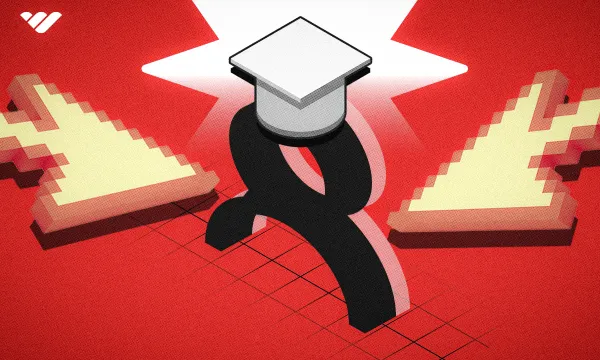The internet has been one of the greatest forces for innovation and change in human history, and there are now entire generations that couldn’t imagine a world without it. However, that doesn’t mean you’re late to the party if you’re only just considering using the internet to make money!
This guide is going to take a deep dive into 40 different ways to make money online, covering various different categories such as ecommerce, content creation, online services, and trading. No matter what your goals and skills are and how much time or effort you have to put into your new venture, there's sure to be something in our list for you.
How to start making money online
Before launching into the different ways you can make money online, it’s important to outline your goals and identify any constraints. As with practically anything, the amount of success you might expect to have with online money-making is going to be proportional to the amount of time and resources you put into it, so your situation matters a lot.
Here are some key points to consider before you start your online money-making journey:
- How much time and effort can you dedicate to this venture? You might take very different approaches if, for example, you’ve got money in the bank and plenty of time on your hands versus if you’re working full-time and only have an hour to spare every day.
- Do you already have an online presence? If you have an online following of some sort, it’ll be far easier to achieve success right at the start of your new venture since you’ll be able to leverage this new business to your existing audience and have a ready-made market for your content, products, or services.
- What is your skillset? If you're great at admin but terrible at content creation, then some of these will be much more suited to you than others. When choosing a money-making tactic don't just look at the earning potential but consider what existing knowledge you need to make this a success.
So, let’s take a look at the top 40 ways to make money online with a laptop or phone, broken down into the categories of ecommerce and product sales, monetization of content, freelancing and online services, trading and investing, as well as Web3!
Ecommerce and product sales 🛒
1. Start an online store

Ecommerce contributes massively to the flow of value online, and it’s surprisingly easy to set up a professional online storefront. Whop is a perfect example of this—it can take as little as a couple of minutes to set up a Hub on Whop and start selling digital products.
Whether you're selling physical or digital products, an online store is a fantastic way to reach the widest possible market.
Getting started is extremely easy, but there are still things you do need to consider. Firstly, you need to decide what products you want to sell. Then, make sure your products are within the legal framework wherever it is you reside, and think about the structure of your business. You’ll be considered a sole proprietor at the beginning, but it may be worth learning about LLCs and their benefits as your business matures.
If you run an online store selling physical goods, remember that you’ll need to think about managing inventory and figure out delivery. Logistics is extremely important, so make sure not to neglect it if you don’t want to run into trouble. It’s one reason that many successful entrepreneurs prefer digital products—thanks to platforms like Whop, all you really need to focus on is the product itself.
Getting the product right is crucial, but once you do, it’s just a matter of scale. For this reason, running your own online store on a platform like Whop can be incredibly profitable. Even if you start small, you could end up deciding to make this your primary income stream.
Initial Investment: Low (High if dealing with physical goods)
Time/Effort Required: High
Potential Profit: Very high
Key Considerations: High-quality product, marketing, customer Service
2. Dropshipping

If you haven’t heard of dropshipping before, the concept is really simple—it’s all about selling products without actually holding inventory. In fact, you don’t have to worry too much about the product either, since dropshipping is all about partnering with wholesalers or manufacturers who handle storage, packaging, and shipping products directly to customers.
You need to take care of marketing and customer service, along with the storefront of the operation, but beyond that dropshipping can be a way to make money online that doesn’t tax you too much in terms of time. Once your dropshipping business is up and running, it’s generally just a matter of keeping an eye on it and being on top of customer support, plus whatever marketing activities you want to run.
Beyond good marketing and great customer service, the key to running a successful dropshipping business lies in finding a reliable supplier or suppliers. This can be easier said than done, so you should anticipate putting in plenty of effort at this stage of the process. Developing a good relationship with your suppliers is important, because if they let you down, your customers aren’t going to be very happy.
Once you’ve sorted out your suppliers and know what products you’re going to list, you can set up your storefront. How and where you do this is up to you, but remember to customize your product descriptions and leverage your knowledge about the market and what customers want. Your suppliers, especially if overseas, are probably not going to have the level of knowledge of customers’ wants and needs that you do.
Dropshipping can be a very viable source of income, but it’s no secret, and you may find yourself up against plenty of competition. For that reason, you could find that the profit margins involved are quite thin. Whop has a selection of different dropping shipping communities you can join to learn more.
Initial Investment: Low
Time/Effort Required: Low
Potential Profit: Low
Key Considerations: Storefront, marketing, customer service, finding reliable suppliers
3. Affiliate marketing

Affiliate marketing is a great strategy if you want minimal involvement in a business but are confident of your ability to market or direct potential buyers to products. It’s a performance-based model that’s all about promotion of products, and as an affiliate marketer you can earn a commission for each sale, lead, or even action that your efforts result in.
Many companies of different sizes have affiliate programs, and all you need to do in order to get started is sign up. Once you’re accepted, all you need to do is pick out what products or catalog of services you think you can market, and grab your tracking links!
The thing here, though, is that you need some sort of audience to make this work. Armed with an affiliate link but no platform to broadcast it is a problem—as such, affiliate marketing is often a great supplementary strategy if you’ve already got an audience via Twitter/X, Instagram, or even a blog, podcast, or YouTube channel.
There’s nothing stopping you from starting out with affiliate marketing and then moving on to content, however. If there’s a particular product you think you can sell, there’s nothing stopping you from registering to be an affiliate and then writing a blog review of the product or recording a video of you unboxing it. You could even run paid advertising campaigns using your affiliate link!
Initial Investment: Very Low
Time/Effort Required: Very Low
Potential Profit: Depends on audience/marketing reach
Key Considerations: Having or building an audience to reach with your affiliate links
4. Print-on-demand
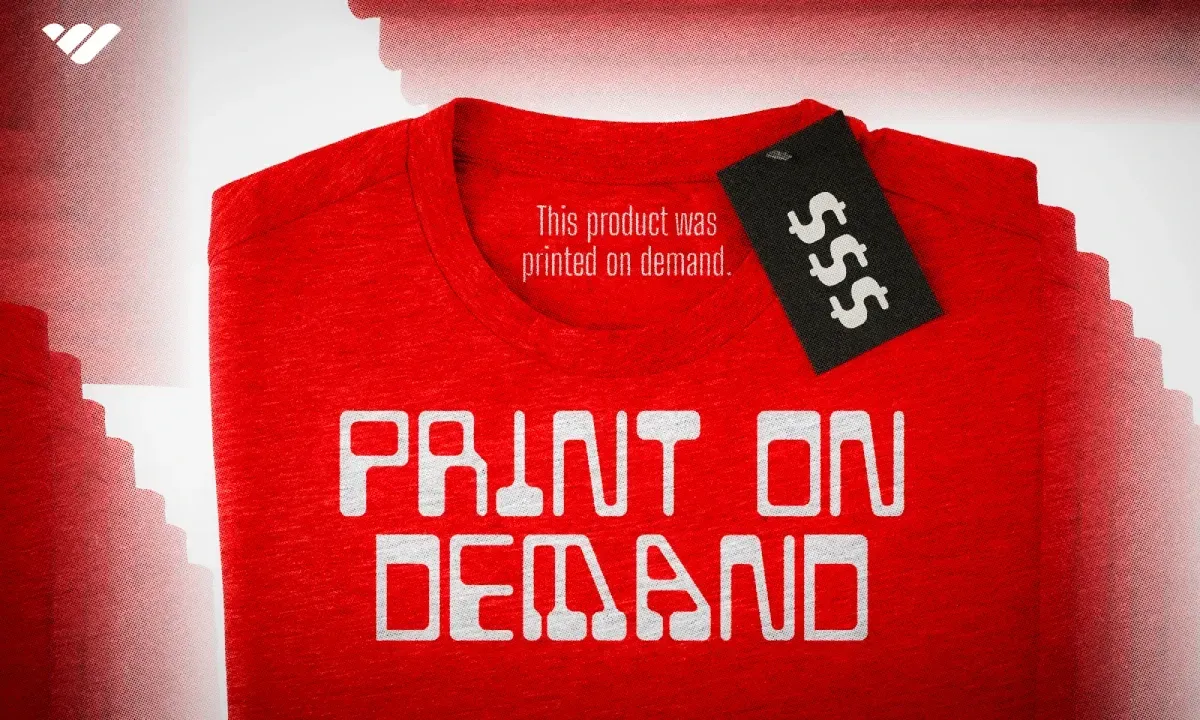
If you’re into the creative side of doing business and would like to monetize your skill in design without worrying about too much else, then print-on-demand may be a strategy worth looking into.
With print-on-demand, your focus is going to be on creating custom-designed merchandise. T-shirts and hoodies are especially popular, as are mugs, phone-cases, and practically any sort of item that’s easy to reproduce but print onto.
This means that you may not get the opportunity to use your designer’s chops when it comes to deciding cuts, styles or shapes of the products themselves, rather color schemes, graphics, slogans, and logos.
You might already be seeing similarities with dropshipping here, but it’s a little bit more complicated. For one thing, you’re not only involved in the marketing of the product, but also the final stage of the design. This also means that you need to find a good printing partner along with a manufacturer for the unprinted products you’re going to sell.
Finally, you also have to manage the ecommerce aspect of the business. This means operating the digital storefront, marketing, and customer service as well. While it does entail quite a lot of effort on your part, print-on-demand can be extremely rewarding since whatever sales you make are down to the quality of your own designs.
In addition to that, print-on-demand can be a great way to make money online thanks to the easy scalability of the business. Once products are flying off the shelves, scaling up just means getting more production capacity from your suppliers—you don’t have to worry too much about inventory management.
It can be a competitive market, just like dropshipping, but the fact that you can differentiate not just via marketing but also design itself makes print-on-demand slightly more profitable if you get the mix right.
Initial Investment: Low
Time/Effort Required: Medium
Potential Profit: Medium
Key Considerations: Storefront, marketing, customer service, suppliers, good designs
5. Sell subscription boxes

Subscription boxes are a fantastic ecommerce model when it comes to making money online because not only are they easy to put together, they also leverage the recurring revenue model that so many businesses are going crazy about. The regular, predictable income is fantastic for cash flow too, and setting up a couple of subscriptions can really help to keep your online business ticking over.
The subscription box business will guarantee recurring revenue, and it’s all about curating a selection of products and selling them to customers who’ll want them delivered regularly. Exactly what sort of product selection you’re going to sell will depend on your expertise and what your market research tells you that there’s a need for—and practically anything could work.
There are subscription box brands out there that’ll deliver customers a selection of wine and a platter of cheese every week, for example, and on the other end of the spectrum you’ll also find plenty of fitness supplements being sold as subscription boxes. Big brands are onto it as well—more and more products are probably being suggested to you via subscription on marketplaces like Amazon.
The selection and marketing of your subscription boxes are key to the business, but remember that a lot of what we mentioned in some of the previous sections will also hold true. You’ll still have to figure out your supply chain, an online platform to sell from, and your fulfillment process too.
Initial Investment: Low
Time/Effort Required: High
Potential Profit: Medium, but recurring revenue is highly beneficial
Key Considerations: Product selection, marketing, suppliers, fulfillment
6. Personal shopping
Personal shopping is usually a more localized, in-person service but given the magic of the internet and ecommerce, there’s no reason that you can’t make a successful online business out of it!
Usually, personal shoppers choose a niche and then help clients find items in that niche. It’s generally a matter of inspiration and style, since not everyone has an artistic eye or good taste in home decor. Sometimes, it’s also a question of rarity, with collectors and enthusiasts willing to pay big bucks if you’re able to get out there and find those rare or unique items.
The trick, therefore, is to figure out your niche and whereabouts in this spectrum you might be able to operate in. You might be able to locate or get good deals on rare sneakers or watches, for example, or maybe you’ve got contacts in the auto industry which could mean leads when it comes to rare cars.
Whatever your niche, all you’ll need to do is set up an online store that displays your style and expertise, and find a way to ship the stuff you shop to your paying customers.
Initial Investment: Variable depending on your niche
Time/Effort Required: High
Potential Profit: Medium
Key Considerations: Finding your niche, setting up a great online store, and having or acquiring some sort of competitive advantage
7. Engraved gifts
Generally, selling items from an online store or dropshipping means that people are paying you for products with a more general appeal. However, personalization and customization are a big thing in business, and you could easily set up an engraving business to add a lot of value to what you’re selling.
Engraving specifically is becoming a bigger and bigger market too, which is fantastic given that engraving tools don’t cost all that much. So, step one is to pick up some engraving tools, and learn how to actually do the job.
Once you’re comfortable with where your engraving skills are at, you can start out on the business side of things. An understanding of what sort of gifts people are buying and like to customize will stand you in good stead, and even just a cursory look at the market can give you an idea or two—it’s hard to go wrong with engraved jewelry or drinkware, for example.
It might be a good idea to try engraving a bunch of different products before narrowing down to a particular niche that either sells well or you enjoy working on.
Initial Investment: Medium
Time/Effort Required: High
Potential Profit: Medium
Key Considerations: Learning how to engrave and understanding the engraved gift market before finding a supplier for the base gifts that you will work on
8. 3D printing
3D printing is one of those technologies that’s improved significantly over the past few years, and enthusiasts can now afford to install hardware at home that doesn’t break the bank or take up inordinate amounts of space.
There are generally two approaches if you’re going to set up a 3D printing business. First, you might identify certain items, designs, or widgets that are commonly on demand, and then print those at scale. Second, you could offer on-demand printing, where customers come to you with specific requests that you fulfill.
It’s worth noting that you might need a little bit (or a lot) of skill in computer-assisted drawing (CAD) depending on how you approach it. Taking customer requests, for instance, means that the majority of your time will be spent getting the design right. The printing’s the easy part.
In fact, you might make the CAD element of this your business, eliminating the printing part—there are a lot of 3D printing businesses out there, but doing up unique designs per people’s requests might be a lucrative business in its own right and require far less investment.
If you’re going to use a small selection of existing designs and pop out a number of items at scale, then the trick is to figure out supply and demand. Is there enough of the latter to actually make money, and what can you do to differentiate yourself from other 3D printing businesses?
Initial Investment: High
Time/Effort Required: Low
Potential Profit: Medium
Key Considerations: Setting up a website and getting your marketing right while also learning CAD
9. Fashion ecommerce store
This is a variation of ecommerce with a focus on fashion, but you don’t need to be the one putting out your own designs or even manufacturing the stuff you sell. Instead, you’re going to be using your eye for trends and knowledge of your market to curate items from other vendors and sell them using your own website.
If you can get the marketing right and reach your target market effectively, it really doesn’t matter what items you’re selling or who makes them—your products could even be dropshipped, meaning that your involvement is minimal. You could also choose to stock your products and sell them physically, so it’s workable as a fully online business as well as a hybrid physical one.
Once you get your brand name out there you might actually look to get a little more involved in the design process, or even hire a designer and put even more unique products out there.
Initial Investment: Medium
Time/Effort Required: Medium
Potential Profit: High
Key Considerations: An eye for fashion and ability to connect with your target market
10. Private label products
Private Label Products are a product category that make a lot of sense as an online money making option next to some of the other ecommerce ideas we’ve listed so far. It’s also not a very complicated business model, and you’ve already come into contact with it if you shop at a local supermarket or even online at Amazon with the Basics range.
There are probably a few options when it comes to supermarkets locally, and if you pay attention, you might see that all of them have store brand products—and some of them sell almost exactly the same products as the other stores, just with different packaging.
This is private labeling. You’re in charge of the brand and marketing, and you’re linking up with a manufacturer who can supply the products you want. The agreement you make with them will dictate any sort of exclusivity, so unless you’re a really, really big player in your niche, expect the manufacturer to sell the similar or identical product to other private label firms.
So, your differentiation comes in with packaging and marketing. If you can really connect with your target in this manner, it’s very possible to build a successful brand and product line. Mind, you might have to sort out some sort of location to store inventory, but you might find manufacturers who provide storage as well.
Initial Investment: High
Time/Effort Required: Medium
Potential Profit: High
Key Considerations: Knowing your market and creating the appropriate brand and positioning strategy
11. PLR digital products
PLR stands for Private Label Rights and this is almost exactly the same concept as what we went over under Private Label products above. One exception: the concept works very well even if everything’s digital, including the type of products you want to sell.
Digital products can be duplicated infinitely and stored extremely easily so it makes a lot of sense as a business model over physical products. It’s also a lot easier to edit or change digital products, so you can tweak a lot more than just the packaging.
In fact, with PLR digital products it’s almost expected that you’re going to be putting your own spin on things. That said, you don’t need to—you’re paying someone to buy the right to sell the product in whatever form you choose to.
You could also create PLR digital products yourself. Apps, software, digital art—whatever it is, there are people and businesses out there who’ll pay a pretty penny for that sort of thing, especially since they can piggyback atop your work and leverage their own audiences with minimum effort.
Initial Investment: Low
Time/Effort Required: Low (High if you’re creating the PLR digital products)
Potential Profit: Medium to High
Key Considerations: Identifying an audience and niche for your products
Monetization of content 💰
12. Blogging

Blogging has been a popular way to make money online for decades now, and it’s a great option if you’re comfortable with the written word or can simply get your thoughts across effectively.
The best blogs tend to focus on particular niches (like these great ecommerce niche blogs) and bloggers tend to have some level of expertise or authority over that specific area of interest. Their experiences, advice, and thoughts can be extremely valuable to readers who may not know as much and are looking to learn, or simply want to live vicariously.
To get started, choose a niche that you’re passionate about or knowledgeable in. You may not think so at first, but sometimes, the more obscure the better—whatever you’re thinking about taking as the subject for your blog, there’s likely going to be a market for it from others who share your interest.
The next step is to set up a blog, and there are several ways you can do this. One of the best approaches is to self-host your blog by purchasing a domain from a hosting provider, but this can be a surprisingly intimidating process for someone who hasn’t done it before. Luckily, there are plenty of blogs on how to do so!
After that, it’s all about your content. If you run a ‘how to …’ internet search, your results are probably going to be plastered with blogs (and videos) on the subject. You may need to strike a balance with your content, here—you don’t want to be on page 12, after all.
Some research into search engine optimization (SEO) will go a long way, but don’t compromise on your quality. Once readers find you and realize you’re not just another cookie-cutter pile of keywords, and that your content is valuable and engaging, they’re going to stick around if you keep posting.
Actually earning money from your blog tends to become a matter of reach. Once you can show that you have a following and generate decent traffic, advertising programs like Google AdSense can start getting revenue ticking through. You may also be approached by various sponsors, and you can tie in your own additional streams by publishing eBooks, designing courses, or selling memberships.
Initial Investment: Low
Time/Effort Required: Medium
Potential Profit: Medium (very low until you build an audience)
Key Considerations: Choice of hosting/platform, Search engine ranking while maintaining high quality, Monetization strategy
13. YouTube

If writing isn’t your forte but you don’t mind getting in front of a camera, it’s worth considering video content if there’s a particular niche that you’re particularly into. YouTube as a platform has what amounts to a monopoly on medium-to-long form video content, so there are certain constraints in this area, but it’s also a far more sought-after form of media.
Technology has progressed to the point that downloading video content isn’t much of a hassle, even in countries with data-limited internet plans. This means that whenever you have a ‘how to …’ search in mind, it’s often a better idea to watch a video tutorial than read up on the subject—even if the presenter isn’t great, you can see how it works on camera.
Thanks to the limited availability of video content platforms, remuneration for content is very much skewed toward the platform itself and the tech company that owns it. However, you can make a significant amount of revenue from YouTube once you reach a certain threshold of views and subscribers.
Certain niches and audience demographics also matter—it’ll be easier to succeed with a finance channel with predominantly U.S.-based viewership, for example, compared to a channel catering to low spenders in a “less valuable” area.
It’s also a sad truth that poor-quality content that panders to platform algorithms is far more likely than good content that goes against the grain. Still, once viewers stumble over your content and decide that they like your work, especially if they signal it by liking and subscribing, the YouTube engine is more likely to start suggesting your videos to others.
Putting in some investment at the start to create a better product can definitely help, as can a pre-existing audience from some other form of platform or content. As a new creator, though, you’ll just have to stick with it and keep dropping videos until you hit that magic subscriber count that qualifies you for revenue from YouTube.
In terms of monetization, YouTubers are well known for setting up alternate streams of income such as courses, paid memberships, and even print-on-demand for their own merchandise. You can use YouTube as a funnel to drive your audience towards a paid community, and then also sell complementary digital products and print-on-demand goods!
Initial Investment: Medium (You may have to purchase hardware, including portable cameras and mics depending on your niche)
Time/Effort Required: Medium
Potential Profit: High
Key Considerations: Niche, quality content, adequate hardware, learning to edit videos
14. TikTok

If YouTube’s the king of medium-to-long form video, then TikTok is the undisputed monarch of the short stuff. YouTube does have a “Shorts” format but TikTok’s entire platform is based around quick, entertaining videos that you can take in one after the other in quick succession, with users finding themselves swiping through videos for hours at a time.
TikTok has been around for a while now, and it’s on two billion screens all across the world. This translates to plenty of earning potential as a creator, and while different niches and styles of content might lend themselves to different levels of monetization, it’s definitely possible to turn TikTok into a full-time job.
The main way creators earn on TikTok is via the TikTok Creativity Program, the successor to the original TikTok Creator Fund. To become part of this you do need to fulfill certain criteria, most notably a follower count of 10,000 and 100,000 video views in the past 30 days.
On top of the Creativity Program, there’s also TikTok Series which allows you the option of selling longer videos to people willing to pay for them. Your TikTok Series can go up to 80 videos of 20 minutes each, so you can do practically anything with them—and creators already are pushing the envelope, selling everything from home-brew sitcoms to their own courses. Then, theres the TikTok shop, where you can sell products via live shopping, shoppable videos, product showcases, and the shop tab.
TikTok also has donation options via tips and gifts, so there are a lot of ways to make the platform work for you.
Initial Investment: Low
Time/Effort Required: Medium
Potential Profit: Medium (you’ll need to meet all of the monetization requirements, too)
Key Considerations: Algorithm knowledge, picking the right niche, content quality
15. Streaming
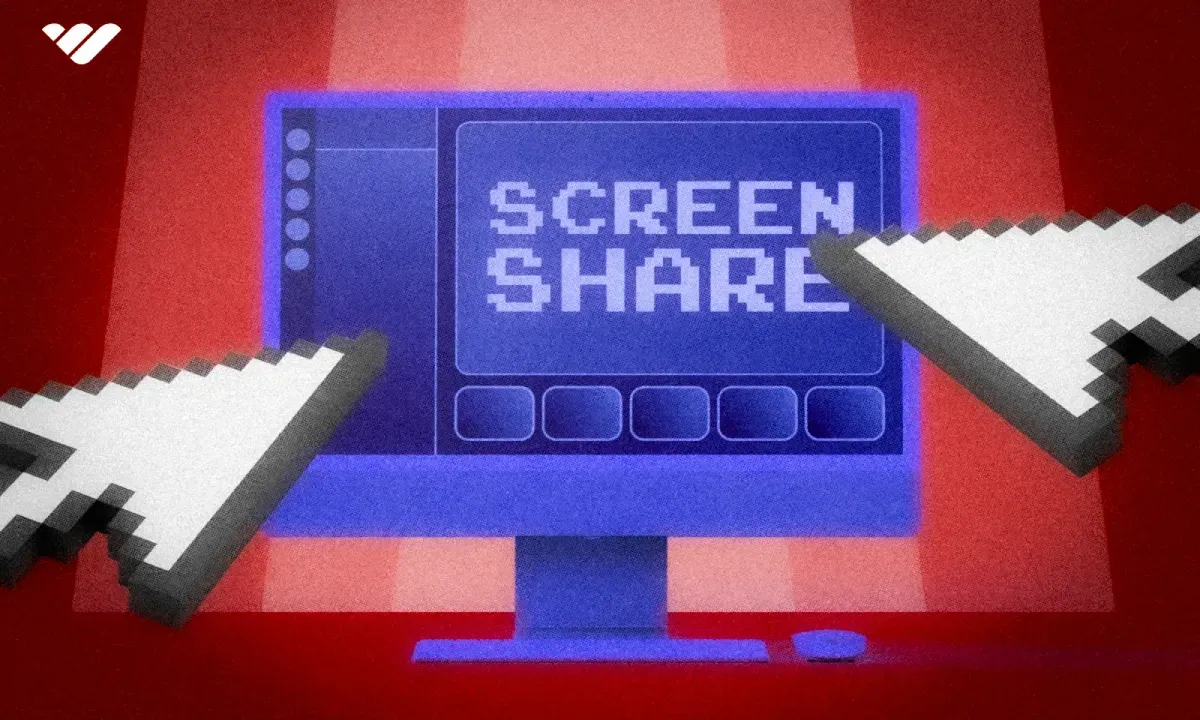
Streaming requires a lot of the same skills as running a successful and profitable YouTube or even TikTok channel, but it’s much like comparing a sprint to a marathon. Streaming by nature tends to lead to much longer recordings, and they’re done live—so if you rely on a lot of editing, then shorter formats may be more your speed.
On the other hand, if you are able to provide consistent entertainment across a longer session, or simply have a niche that caters to this, then streaming is worth a look. Streamers succeed for a variety of reasons, whether it be their own personal charisma and how they present, or the skill and knowledge they can demonstrate. There’s a lot of freedom when it comes to finding your niche.
A visit to Twitch or YouTube may surprise you when it comes to the variety of what people stream. Computer games tend to be one of the most popular forms of livestream, especially with younger audiences, but you’ll find streams covering practically everything—fixing cars, woodworking, discussing fiction, and even walking dogs!
One of the advantages of streaming is that it’s quite easy to monetize even before you hit the sort of critical mass that other forms of content creation require. Streamers take donations from their audience in real-time, and it’s generally understood that the streamer would answer questions that accompany donations, or give “shout-outs” to those users when they donate.
That said, you can’t really expect that sort of thing if you only have a handful of people tuning in. An audience still needs to be built up, and watchers can interact with you and each other with the stream’s live chat. It can be quite difficult to keep an eye on live chat while also streaming good content, but practice makes perfect.
Once you do get used to how things work and build up an audience, it’s very possible to see your earnings ramp up dramatically. If your content is good and you figure out an effective strategy for donations, you can earn thousands of dollars per hour of live content.
Initial Investment: Medium (You will need the right hardware and software to stream effectively)
Time/Effort Required: Medium (But a regular schedule is advisable)
Potential Profit: Very high
Key Considerations: Niche, being engaging/entertaining for longer periods
16. Podcasting

If blogs are a written form of presenting content and YouTube and streams tend to be mostly visual, then podcasting is your primary option when it comes to creating audio content. Podcasts tend to focus on a certain topic or range of topics, and distribute episodic content on a fairly fixed schedule.
As with other forms of online content creation, it’s possible to create a podcast on just about anything, whether it’s education, personal stories, instruction, or even doing an Actual Play of a tabletop game every week. You can go for a broader niche or a narrower one, and format your show in any way you like—there are just as many successful solo podcasts as there are interviews and panel discussions.
Just like with video content, however, you shouldn’t neglect your equipment. In fact, podcasting might require even more attention in this regard—the fact that it’s primarily audio means that your recording quality needs to be good. That means the right microphone setup, soundproofing if required, and plenty of attention to the quality of mixing and editing.
Just like with blogging, you’ll also need to think about where you host your podcast. There are more platforms for quality podcasts than there are for video content, so it’s worth shopping around and seeing which platform suits your needs best.
Podcasts might also need more marketing than other forms of content, simply because blogs can be found easily off a search and YouTube is one of the most popular websites on the internet. It’s not quite as easy for people to find your podcast in a similarly organic manner, so it’ll need some legwork on your part.
In terms of monetization, podcasts work much like a radio show with advertisements and sponsorships that are mentioned during the recording. You might also want to tie in a way listeners can donate to you, and pods also tend to rely a lot on other income streams to supplement their earnings.
Initial Investment: Medium
Time/Effort Required: Medium
Potential Profit: Medium
Key Considerations: Audio quality, presentation, marketing, platform choice
17. Monetize your community

If you try your hand at creating content via one of the above options, you’ll find that it may take a while to get going, but especially if you use a popular platform like YouTube, you’ll start growing an audience. You’ll need to have a certain subscriber or follower count to get monetized on these platforms to begin with, but you shouldn’t stop there.
Even a bare minimum YouTube subscriber count of 1,000 for Partner Program entry is pretty significant, when you think about it. Each one of those subscribers is a person who’s gone out of their way to subscribe to your content, instructing the platform to alert them whenever you upload.
What you've got here is a community, and now it’s up to you to figure out how you’d like to monetize. Some creators are happy to use on-platform monetization options, such as YouTube’s Memberships, where premium members can pay extra and then you can choose what benefits to give them. The same goes for TikTok Series, but you can take things a step further and advertise your own digital products using your content too—many creators do merch via print-on-demand, for example.
You can also take your audience off-platform, for example with your Whop Hub, Discord, or Telegram. This allows you to take greater control of your community and establish a direct line of communication with your fans, and promote engagement in various ways. The pinnacle of this option then becomes offering a premium option and actually charging a subscription fee for access to your community or parts of it.
Initial Investment: Very Low
Time/Effort Required: Low
Potential Profit: High
Key Considerations: Quality content to build community, picking the right time to monetize aggressively
18. Email newsletters
Newsletters are an extremely interesting way to make money these days, and it’s an extremely scalable and highly creative model as far as online businesses go. You’re probably accustomed to a newsletter being a marketing tactic and know that most businesses have one, so how can a newsletter on its own make money?
Well, there are two ways in which newsletters are becoming a business. Firstly, you can simply offer a premium newsletter. Everyone who’s willing to pay to subscribe, therefore, is contributing revenue. The trick is providing enough unique value that they find your premium newsletter worth paying for, and can’t find the same sort of content for free elsewhere.
Secondly, you can run a free newsletter but monetize it in other ways. Your newsletter could point people toward your digital products, a premium community, and contact ads (or be sponsored in its entirety). A free newsletter is a lot easier to get traction with, and if you’d like to know more about making money from your newsletter, here’s some further reading.
Initial Investment: Very Low
Time/Effort Required: High
Potential Profit: Extremely high for a premium newsletter
Key Considerations: Giving people a reason to pay for your premium newsletter, or monetizing a free one efficiently
19. Self-publish ebooks
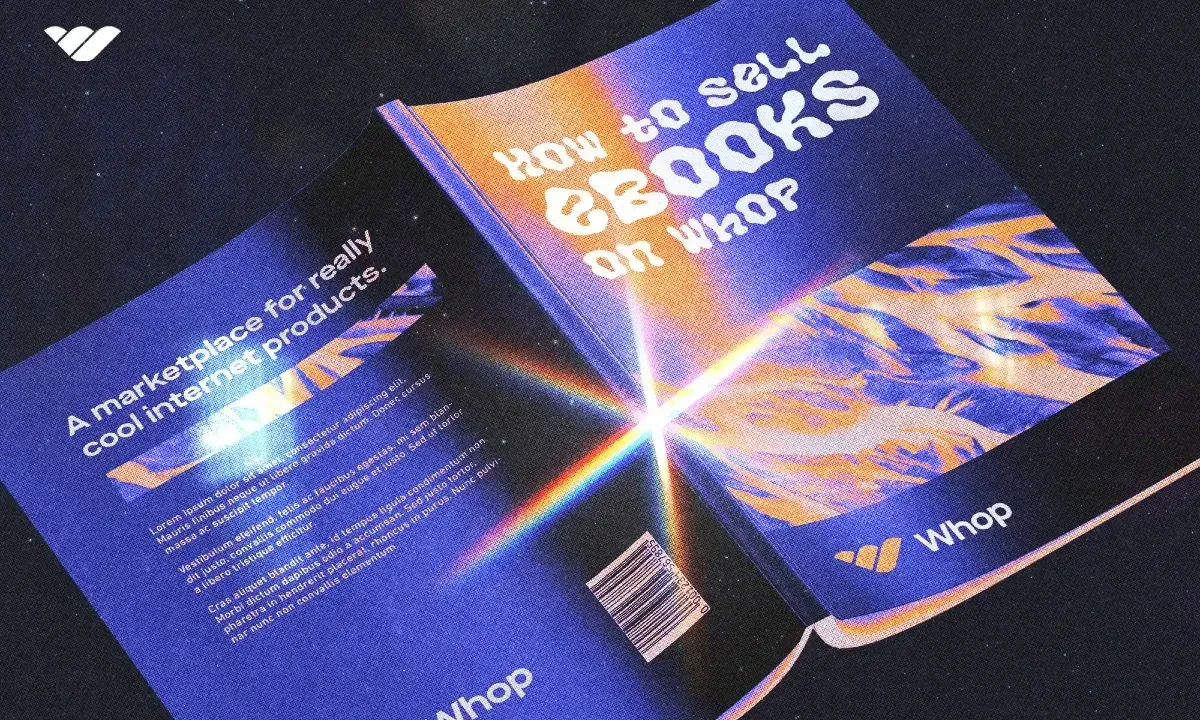
Publishing is one of the areas that the internet has been able to democratize effectively in recent years. No longer are you at the behest of a publisher’s whims when you want to release a book—you can do it all yourself, especially if you’re not looking for a physical end product.
The benefit here is that, as an author, you have complete creative control and full freedom over all aspects of your book, including production, ebook length, distribution, marketing, and for the most part, content. The latter does have a disclaimer because you will need to sell your ebook on some sort of platform, which may have certain rules related to content.
The main consideration when self-publishing an ebook is your manuscript. Just like with the traditional route, you should ensure that your manuscript is of the highest quality—the difference being that there isn’t a publisher who might reject it later on. You need to ensure that your manuscript is properly edited for spelling and grammar, and there are professional services out there for this.
Cover design is also something that comes into play. The old adage of “don’t judge a book by its cover” simply doesn’t work when there are so many books for people to choose from—however good your book is, it won’t be read unless someone buys it, and the cover plays a big part even in a digital storefront.
You’ll also need to think about the format once your manuscript has been finalized. There are a lot of platforms and even devices for ebooks, so don’t forget to invest in a formatting software to ensure that your product can be accessed in every possible way.
Finally, there’s platform selection. You might already be aware of some of the top platforms in the ebook market, but there’s a lot more competition than you might think—there are several ebook platforms worth considering, and the industry is starting to become much more author-friendly now that there’s competition to be had among platforms.
Initial Investment: Low
Time/Effort Required: High (initially)
Potential Profit: Very high
Key Considerations: Content, cover design, platform, formatting
Freelancing and online services 🖥
20. Freelancing

Freelancing is a type of work arrangement where you, as a freelancer or “independent contractor”, can offer your skills, expertise, and services to clients on a project-by-project or contract basis. The main advantage of freelancing is the freedom it gives you—a far cry from the hated 9-to-5, you can work whenever, wherever, and for however long (or little!) you want.
What you do as a freelancer really depends on your skillset, or at least what skills of yours you identify as being marketable and useful to others. If you’re a writer but don’t really have an ebook in you yet, you could try and freelance as a copywriter, but that’s just one of many possibilities. You could freelance as a web developer, a graphic designer, a digital marketer, a video editor… the list is practically indefinite.
One thing that you may need to think about as a freelancer is building a portfolio. An attractive webpage with some samples of your work could be enough, but testimonials can help too. This might be hard to manage if you’re just starting out, but think about building a portfolio as you go.
The main thing with freelancing, however, is connecting with clients somehow. There are various platforms that attempt to do this with various degrees of success, and a portfolio is especially important if you list your services through these websites. It’s also a good idea to keep an eye on social media and various online job boards—you may have more success going to clients than waiting for them to come to you.
Some platforms allow for pitching and bidding on jobs. Clients can post listings as to what they want, and it’s up to you to pitch. This is an opportunity to differentiate yourself from all the other freelancers out there because pitching is a rare but easily acquired skill.
Once you do acquire clients, remember that keeping them comes down to the consistency and quality of your work along with the communication skills you possess. A failure in one of these regards will make it difficult to establish the sort of relationship you need with your clients that keeps the cash coming in.
You’ll also want to stay on top of the legalities of contract work and freelancing in your jurisdiction. Whether it’s correctly creating and issuing invoices or even needing to acquire a license to freelance, different countries (and states) have different regulations. You’ll also have to stay on top of tax law and file your own returns.
Initial Investment: Low
Time/Effort Required: Very high
Potential Profit: Medium
Key Considerations: Finding clients, communication, portfolio, legal and tax regulations
21. Online coaching

If you have significant expertise or extensive qualifications in a certain area, you could consider online coaching. It’s usually done on a freelance basis as well, but is focused on a specific niche where clients tend to be individuals in search of personal or professional development.
What’s nice about today’s level of technology is that you can become an online coach from the comfort of your own study or living room. As long as your internet connection is good and you’ve got audio and video gear that passes muster, you have all the tools you need to deliver a good online coaching experience.
Credentials and qualifications can be important, especially when starting off. If you’re going in fresh, your clients need to take a leap of faith so having the right credentials can really help. A solid online presence helps too, from a good website to a professional social media footprint.
From that point onwards it’s about marketing to reach the sort of client count you want, and providing the best possible coaching for clients you do acquire. Satisfied customers will always come back for more if you offer continuous learning and have more to offer, and they’ll help you massively with positive reviews.
Initial Investment: Very low
Time/Effort Required: High
Potential Profit: High
Key Considerations: Client acquisition, marketing, effective coaching, client retention
22. Online consulting

Online consulting is another option for experts, although it tends to involve the provision of services to enterprise clients rather than individuals. As an online consultant you have the freedom to work remotely using digital communication tools, but provide most of the other services and solutions that consultants do.
If you’re in a situation where you can realistically consider online consulting, you probably already have your niche figured out. Effective consulting tends to need significant industry knowledge, and many consultants tend to be former employees of various industries who see that there’s far more money to be made if they write their own invoices.
This sort of experience needs to show in some way. You’re going to struggle if you set up an online consultancy without the experience and credentials to back it up, so make sure to broadcast the qualifications you do have when pitching or setting up your website.
It’s also advisable to have a set framework that you can share with potential customers. This generally means an outline of your processes and methods along with the sort of deliverables clients can expect. This helps clients understand what they can expect, and sets up a realistic roadmap of progress.
Initial Investment: Low
Time/Effort Required: High
Potential Profit: High
Key Considerations: Finding clients, communication, high performance
23. Virtual assistant
Many executives, entrepreneurs, scientists, and various other busy professionals tend to need the help of a personal assistant to manage their affairs, but it’s getting harder and harder to afford (and make accommodations for) a PA. That, along with the general progress of global connectivity and the improvement of technology, has made virtual assistants a thing.
There are several differences between a PA and a VA, the main one being obvious—you’d be working from home or wherever else is convenient, and you don't need to be in close proximity to your client. In fact, you could be in a different country entirely!
As a virtual assistant, your services really could run the gamut. The usual remit of a PA is to take care of more regulation tasks such as schedule management, or if you’re working with an entrepreneur, you might be playing the role of company secretary and keeping basic business affairs in order while they focus on the product, marketing, etc.
You might even find yourself playing a role closer to social media and marketing manager, handling social media posts and writing newsletters. Ultimately though, it’s all down to you—the sort of work you’re willing to do for your client is something that you’ll want to decide on before you enter into the contract, with a wider range of services setting you apart from other VA’s out there.
It’s also very possible that working for a single client isn’t going to be terribly demanding in terms of hours, especially if they have a limited number of tasks they need you to take over. That means filling up your hours with a second, a third, or even more clients! Most PA’s can’t really take on multiple clients like this, but a virtual assistant certainly can.
Initial Investment: Low
Time/Effort Required: Up to you, you can work as much or little as you want
Potential Profit: High, if you can optimize your schedule with multiple clients
Key Considerations: Communication with clients and getting your services out there
24. Voice acting
Voice acting is a field that’s been around for a long time, but it’s never been closer to the limelight. The release of acclaimed video game Baldur’s Gate 3 showed the world just how much of a role voice actors can play in a successful project, and the actors on that particular title have shot to a similar level of fame enjoyed by many A-list movie stars.
With the ceiling now raised, the VA industry is going from strength to strength, and voice actors are able to underline their own importance to the different projects they’re on. It isn’t just video games, either—voice actors are required en masse in the advertising field and all across media such as television and radio, video platforms like YouTube, audiobooks, and many more areas.
The dubbing industry could also be a source of work for you as a voice actor. Germany is one of the most unique examples in this regard since the dubbing industry is storied and there are sometimes individual VA’s assigned to one or a handful of voices (the same German VA plays the role of Jude Law and Colin Farrell across all of their films and TV shows for example). Point being, dubbing is often required from English into other languages, and vice versa.
You also don’t need too many resources to get started as a voice actor, since your phone plus an app or two can serve in place of a computer in a pinch and all you’ll need is a mic. If you want to take voice acting seriously, think about a recording location or a small studio of your own, but that doesn’t need to be much more than a nook at home with some well-placed soundproofing.
Initial Investment: Low
Time/Effort Required: Medium
Potential Profit: Medium
Key Considerations: Actually being able to use your voice effectively, so consider voice acting classes if you want to take this gig seriously
25. Resume writing
Resume writing is a very niche area as far as writing goes, but it’s also a profitable one if you can get good at it and advertise your services just right. The simple truth is that most people just aren’t very good at writing resumes and generally marketing themselves around for a new job, so the opportunity is worth investigating.
The trends in the area of resume writing have shifted in recent years but it’s hard to keep up with them, and as a resume writer, you’re going to be staying very current—as opposed to the normal person who perhaps does up their resume every few years and finds out that they’re suddenly behind the curve in terms of what the industry’s doing, you’re staying up to date by creating CV’s every week.
It’s also not a huge stretch to make writing skill in any other area transfer across to resumes and cover letters. The ability to craft narrative tracks across almost every writing discipline, and the need to use keywords is very similar to SEO—except in this case it isn’t a search engine that you’re optimizing for, but rather HR screening software.
As you get better and better at writing resumes and cover letters, it’s only natural that you’ll expand your knowledge and expertise over the entire job-seeking process. This, in turn, can help you expand your services. From just resumes and cover letters, you can start selling courses for job seekers, offer coaching for interview preparation, and much more.
Initial Investment: None
Time/Effort Required: Medium
Potential Profit: Low until you master marketing and scaling your services
Key Considerations: Learning how the industry works and what recruiters/HR want, building your expertise fast, and client acquisition
26. Courses and webinars

Courses and webinars are yet another way to share knowledge and expertise, but while coaching tends to be focused on individuals and consulting is all about putting it into practice, you can choose to play a broader educational role here.
The products here tend to be more structured than with coaching, too, and cover the broad strokes of a particular subject area rather than providing tailored instruction. You can also do one or the other—courses tend to be downloadable, while webinars can be live presentations. So, if your skillset suits one better than the other, you can focus on one area.
The key with courses and webinars tends to be quality and structure of the content you create. You’re probably aware that practically every influencer out there has courses to sell, so you need to differentiate in qualitative terms. You may not have the quantity of sales that they have to begin with, but if you really put the effort in, your courses will stand out.
As such, it’s important to have good structures for your course material and plan out your webinars properly. It’s also a good idea to consider formats and software, letting your growing audience download and view your products across a variety of devices and log into your webinars from anywhere.
Courses have a big additional benefit in that they provide passive income. Once you create them and put them up for sale, you don’t need to do anything more—it’s also why just about every influencer has courses to sell, it’s easy money for them if they get their hooks deep enough into their followers. Plus, you can go even further by creating a community around your online course, opening up additional revenue streams!
Initial Investment: Medium
Time/Effort Required: Very low for courses, medium for webinars
Potential Profit: Medium
Key Considerations: Content quality, marketing
27. SaaS
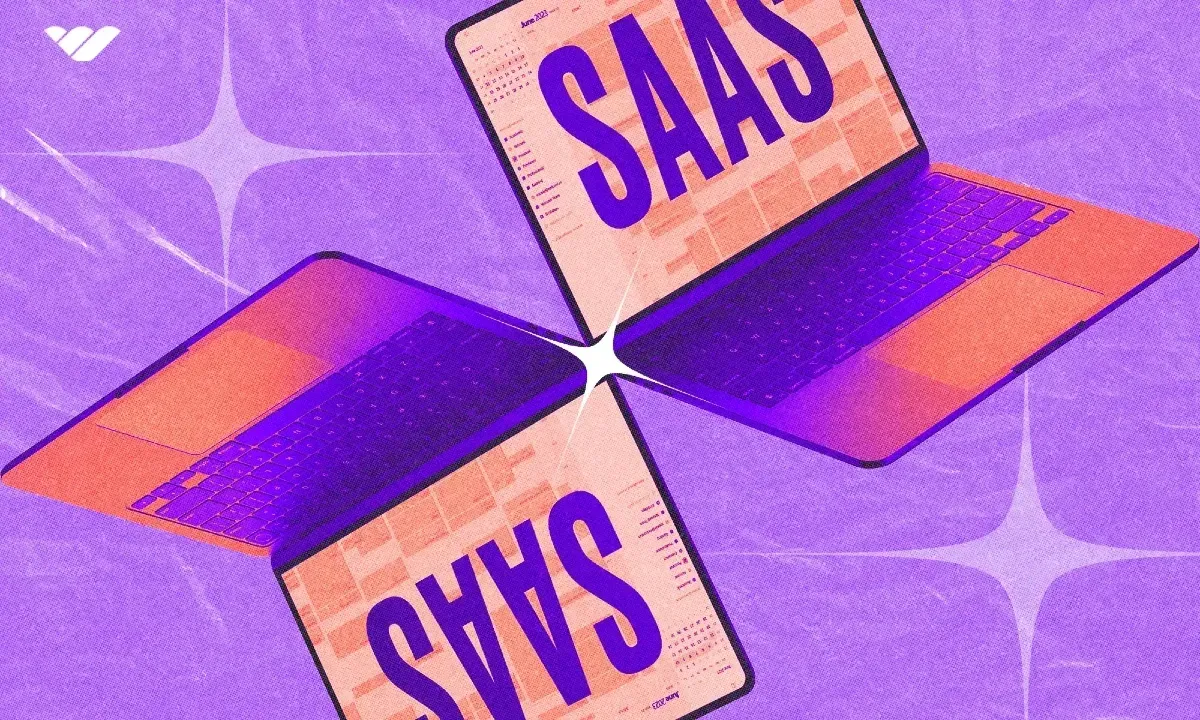
SaaS, or Software as a Service, is a form of cloud computing where users can access software on the internet via a web browser rather than purchasing and installing software on their own machines.
If you don’t know anything about software or web development you shouldn’t skip ahead just yet, because some of the best products start with someone spotting a gap in the market. What this generally boils down to is a problem that a certain number of people don’t have an easy solution for.
Spend enough time in any industry that relies on computing, and you’ll probably have an entire list of potential SaaS ideas. The next step, therefore, is development and coding—if you’re skilled in this area you’re in luck, but it may just be a matter of partnering up with a coder or even just commissioning some code from a freelance developer if the project’s small in scope.
Once you have enough resources to start building your software solution, you’ll also need to consider things like hosting. Cloud services tend to be the go-to here, and most of the top tech companies have options you can look at. You don't need a tonne of money to create your SaaS idea, and there are many ways to bootstrap your SaaS.
Remember that you’re not just providing a problem, but building software that humans are going to interact with. This means robust security measures and data protection, especially if you want to serve European Union-based customers, as well as quality user experience (UX) design. If you’ve a poor UX, then people may decide that your software just isn’t worth the hassle.
In terms of monetization, most SaaS products tend to use a subscription-based model. Users will pay a monthly or yearly fee for access, and you can develop your pricing strategies and subscription plans accordingly.
Initial Investment: Medium to Very high depending on scope
Time/Effort Required: Very high
Potential Profit: Very high
Key Considerations: Robust code, data security and privacy, UX
28. Listing on Whop
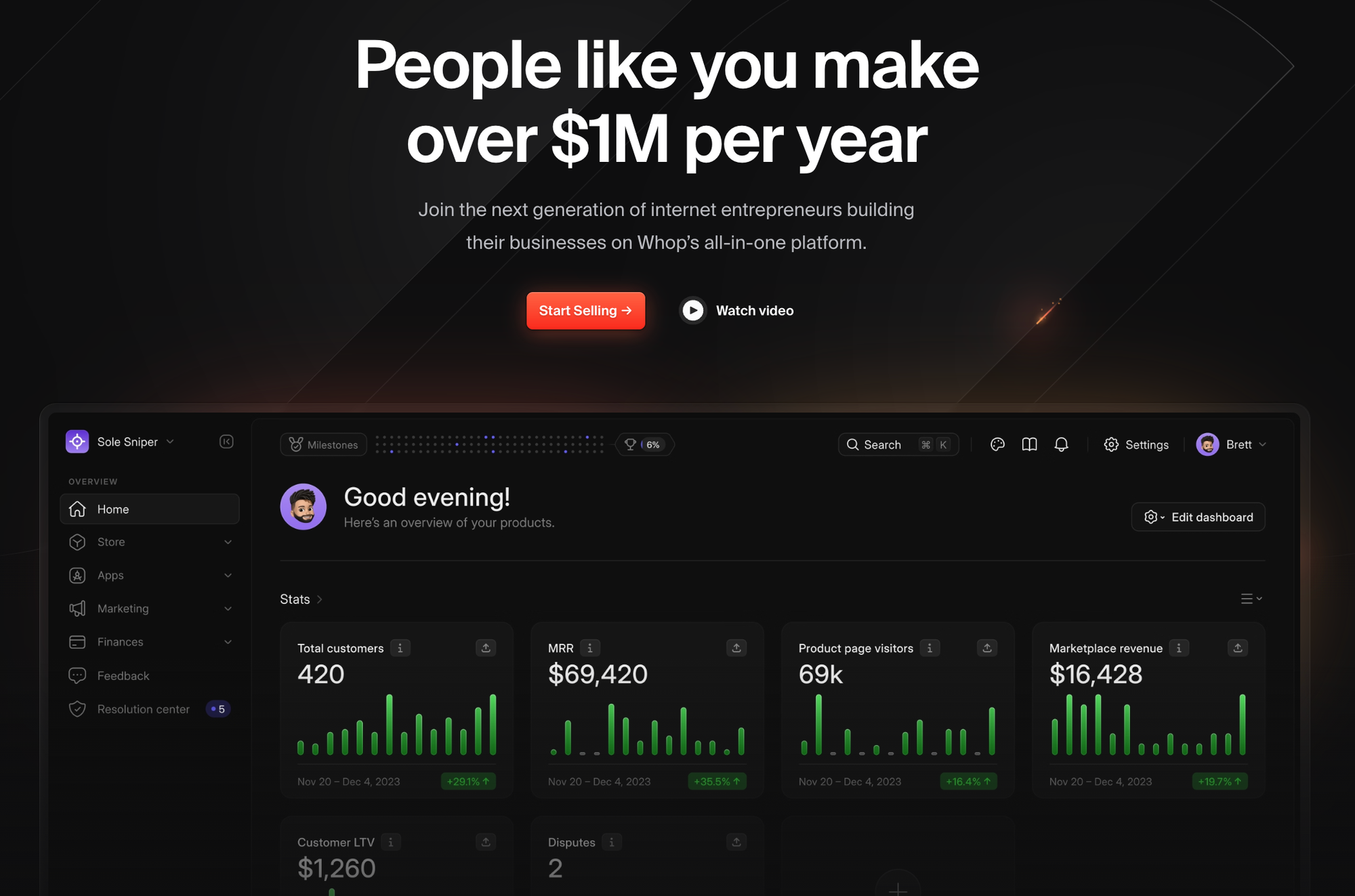
We’ve already mentioned Whop as a great choice to host an online store and community, but several of the options we’ve gone through since can benefit significantly from being on Whop. If you’re looking to make money online you’ve got that invaluable entrepreneur mindset, and Whop was designed for people just like you!
Whop is a social ecommerce platform built for creators to grow their business and revenue. Whop is home to all sorts of digital products and services - developing a SaaS product? List it on Whop. Want to design and sell courses and webinars? Provide online coaching or sell trading signals? Educate traders? Sell your SaaS solution? Whichever the question, Whop is the answer.
With Whop you can build your own Whop Hub for free. Your Hub is the home of your business, and is completely customizable to your needs. With a range of Whop-built apps you can make your Hub community-centric with the likes of the Chat App and Forums App, use it as a place to sell products like online courses, ebooks, PDFs, SaaS, or even use it to facilitate and sell online services like masterminds, coaching calls, and webinars. Or, you can have a combination of all of these ideas - whatever your idea, you can build it with Whop. Then, you can charge access to your Hub on a subscription or once-off basis, and gate products behind differently-priced tiers.
Plus, Whop doesn’t just take care of the Hub, it takes care of customer service for you, helps to handle payments, and looks after just about every aspect of both front- and back-end that you need. With Whop, all you need to worry about is providing the best digital product or service that you can.
If you want to give Whop a try, it only takes minutes to get set up. The best part? There are no membership fees to use Whop - just a small 3% transaction fee when you sell a product or service.
Initial Investment: Creating on Whop is free
Time/Effort Required: Very low to medium (as above)
Potential Profit: Very high
Key Considerations: Niche, product quality
29. Teach ESL online
English is the most global of languages, and while schools in most countries are doing a good job teaching it today, the previous generation(s) haven’t had it quite as good. As a result, there’s still a huge demand for English as a second language among tertiary students and professionals looking to advance their residential and career opportunities.
The easy way to start teaching English online is via one of a number of ESL platforms, but you’ll soon find that freelancing is an even better way to go. If you’re flexible when it comes to your hours, you’ll find that you could be meeting and teaching interesting people from all sorts of fun places.
Once you have a good feel of what students need from you as an ESL teacher, you might even expand your remit and create online English courses!
Initial Investment: Low
Time/Effort Required: High
Potential Profit: Low
Key Considerations: Communication skill, and learning the basics of how to teach a language
30. Online fitness instruction
Fitness is one of those things that you can do virtually just as easily as in a physical location, and teaching people how to get fit isn’t something you need a gym for. Online fitness instruction is already a big market, but it’s one where there’s plenty of opportunity to differentiate yourself from the rest.
Whether you’re sharing the workout routines and tips that you’ve used to get fit yourself or creating a step-by-step course for people to follow, it’s your own knowledge, experience, and communication skills that you’re going to be falling back on.
Furthermore, you could monetize this sort of business in a number of ways. Personalized one-on-one fitness consultation could be your high-ticket item to go alongside a course and a community, for example, and there’ll be plenty of people willing to pay for those different products.
If you want some inspiration or want to see how other entrepreneurs are taking their fitness and health related business online, check out Whop's fitness section.
Initial Investment: Very low
Time/Effort Required: Medium
Potential Profit: High
Key Considerations: You’ll need to be a fitness enthusiast yourself if you want any credibility, and your communication skills will be paramount
31. Teach cooking online
Much like fitness, cooking is another business that lends itself very much to the online format. Best of all, there are a practically infinite number of styles and recipes you can quickly become proficient in, which then gives you lots of content to pass down to your paying consumers.
Again, an online cooking business’ success depends very much on how you decide to run and monetize it. A community is almost a must-have, but it doesn’t have to be premium. A free community has plenty of benefits, and you can deploy monetization elsewhere.
For instance, consider a cooking eBook compiling a lot of your expertise for an easy win, or a premium newsletter giving subscribers a new recipe every week. Cooking also goes great with visual media channels such as video via YouTube or TikTok, or images via Instagram.
Initial Investment: Low
Time/Effort Required: Medium
Potential Profit: High
Key Considerations: What sort of cooking styles you subscribe to and how you distribute your recipes
32. Online travel agency
Travel is an industry that’s rebounding strongly following the pandemic-led downturn of a few years ago, and there are a lot of opportunities opening up as a result. Running an online travel agency, for instance, isn’t something that might come too quickly to mind but it’s a very profitable business once you get the hang of it.
A lot of costs can be saved when traveling if you know how to do it and start building the right connections, which in turn can create a significant bottom line as your business starts turning over. Mastering a niche can also be a good idea, because then you’re going to be getting even more deals by constantly bringing your business to the same places or vendors.
As with any online service, one of the big obstacles when running a travel agency is getting yourself connected with the right customers—so don’t neglect your marketing strategy and planning.
Initial Investment: Medium
Time/Effort Required: Very high
Potential Profit: High
Key Considerations: Making industry connections and quickly learning how to profit from opportunities in the travel sector
33. Taking online surveys
If you’re in the US or another country that’s considered broadly to be a big consumer market, online surveys are an incredible way to earn money without any sort of specific skills or training.
The fact of the matter is that almost every consumer-facing brand is desperate to understand the behavior and psychology of potential buyers, and consumer surveys are one of the most popular tools in the box in this regard. So, for helping a company understand you and people like you better, you are going to be looking for paid surveys.
It’s worth noting that there are lots of scams in the space, so you’ll want to look at research opportunities under the aegis of an established brand. These could be either the company themselves, or via research firms specializing in surveys such as Survey Junkie.
Now, you should expect to replace your job by doing surveys all day, but if you need a couple of hundred dollars extra per month, this is a great way of making it online. Beyond surveys, you might also be picked up for focus groups or one on one interviews, and these could pay very well indeed.
Initial Investment: None
Time/Effort Required: Medium
Potential Profit: Low
Key Considerations: Finding paid surveys on reputable platforms
Trading and investing 📈
34. Passive income from investing
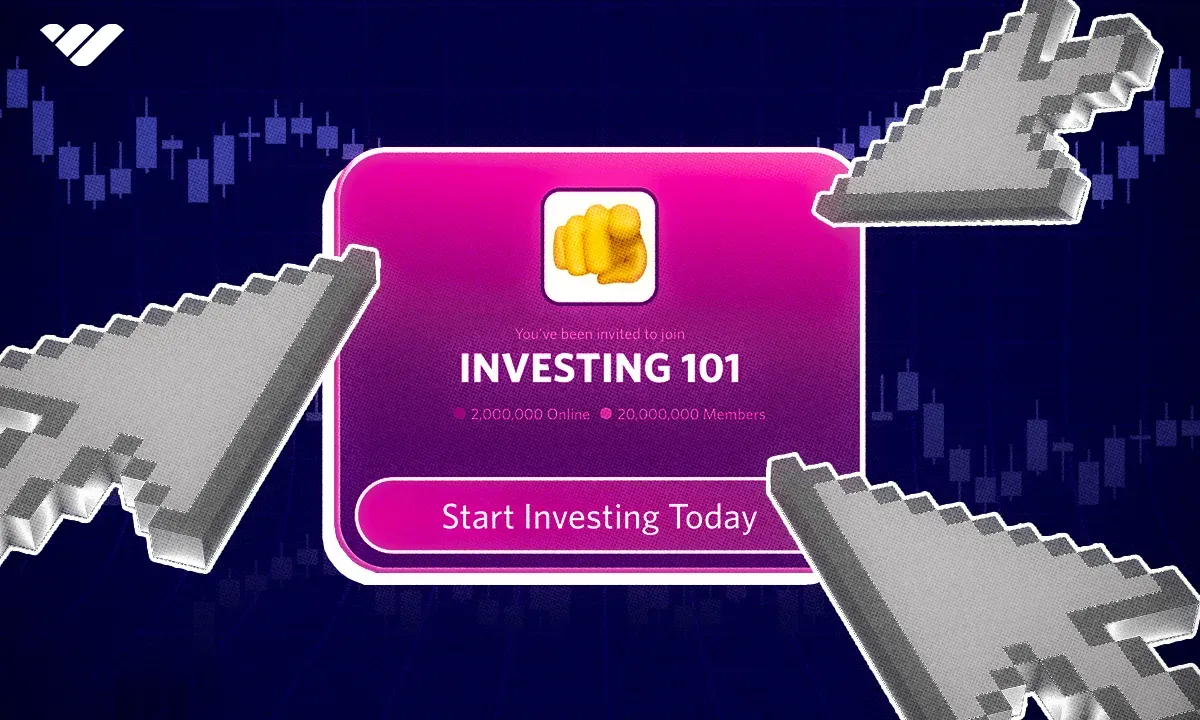
If you’ve taken a look at the stock market lately and wondered why it was doing well, especially in times of inflation, what’s going on behind the scenes is that asset prices are inflating at the same pace as consumer prices. Which, in turn, underlines the value of investing as a means of preserving wealth.
In fact, there are investment strategies that you can leverage online not just as a means of protecting your wealth, but also growing it. In much the same way as we’ve mentioned affiliate marketing and online courses as sources of passive income, it’s also possible to manage this via investing.
The easiest way to do this is called dividend investing. In a nutshell, dividends are a portion of a company’s profits that they pay out to shareholders on a fairly regular basis. All you need to do, therefore, is to identify shares that pay regular dividends and start to accumulate them.
These shares then pay dividends, which means a check in the post every so often. You can treat this as income, or choose to reinvest the dividends by putting them straight back into the same shares, taking advantage of the power of compounding to build your wealth.
It’s important to note that individual stocks and shares aren’t the only assets that can provide a return. It’s possible to earn passive income by investing in bonds, taking advantage of the coupon rate that they pay out, or you can go right to the other end of the asset spectrum and go for proof-of-stake cryptocurrencies which also pay out a certain rate of return.
All of this is a legitimate way to make money online since most stock and asset brokers have great online interfaces and even apps that you can use to execute your investment strategies.
Initial Investment: Your choice
Time/Effort Required: Very low
Potential Profit: Benchmarked against inflation
Key Considerations: Choice of asset(s) and electronic investment platform
35. Trading

Very closely related to the previous section, but a completely different approach since trading is an extremely active strategy compared to the passive income approach associated with dividends.
That being said, trading can encompass several approaches, and the people who make money online in this way (as opposed to losing their shirts) tend to be structured and have a very well-defined approach.
The biggest consideration to look at right away is the time frame you’re dealing with. If you have a certain amount of money that you’re willing to trade and are completely free during trading hours, you may decide to spend the entire day buying and selling—that’s called day trading.
In fact, you might choose to use algorithms and bots for this and run hundreds of trades a day like investment firms do, which is called scalping. On the other side of the coin, you might be a swing trader who does some research on a few stocks, buying when they drop and selling a couple of weeks later.
Once you’ve decided on your approach, you also need to think about the sort of research you want to do. Traders who operate across shorter time frames tend to use technical analysis, but if you’re holding assets for weeks or months at a time, fundamentals may be more important.
Initial Investment: Your choice
Time/Effort Required: Low to Very high depending on trading style
Potential Profit: High, but also high risk
Key Considerations: Risk management, trading style, choice of asset(s) and electronic investment platform
36. Online real estate investing

Rent is a time-honored strategy for earning an income, but thanks to technology, you no longer need to worry about actually buying a property, renovating it, and taking care of tenants!
Today, it’s actually quite easy to invest in real estate properties or even real estate-related assets such as REITs (Real Estate Investment Trusts) without all of the hassles that come with actual property management and ownership.
You’d be well served in doing your research, though. Real estate is a complex market, and it can be catastrophic if you get things wrong—look no further than the global financial crisis of 2008 for this.
In fact, it’s possible that there’s a similar bubble today in the form of commercial real estate, with the majority of the population preferring remote work while the owners and holders of instruments like CMBS (Commercial Mortgage-Backed Securities) desperately push back to protect their investments via their media arms.
The advantage of online real estate investment is that you don’t need to take a large lump sum-sized risk by buying a property. You can invest in small amounts, thereby insulating you from at least some of the risks in the real estate market.
You can adopt both passive and active approaches with online real estate investing, either looking to rent for passive income or being more proactive by flipping assets, so your approach will depend on what strategy you want to take.
Initial Investment: As with any form of investing, it’s your choice
Time/Effort Required: Low
Potential Profit: Low in the short term
Key Considerations: Risk management, due diligence
37. Real estate flipping
This is one of the most ambitious options that we’re going to list, but it’s very doable if you’ve got the capital and an eye for a deal. It also could benefit from a physical component in that it’s a really good idea to visit properties yourself, and of course the traditional take on this business is that you do a lot of the work on your own, too.
That being said, you probably have other things on your plate and don’t have the time to spend weeks or even months renovating a property yourself—that is, if you even have the multiple skills required to do so in the first place.
So, our suggestion here is to approach this business idea with an emphasis on finding good deals on online listings. An understanding of demographics and city planning helps, and one of the keys here is to spot suburbs or areas that are going to see development or gentrification in the near future.
As such, you may not even need to fix up the properties to make a profit through appreciation alone. It’s a good idea to do so to boost your margins even further, and that could be as simple as partnering up with a local agent or company. You can play the role of contractor from a distance, getting the right craftspeople to work on your properties without even needing to be around—or having a local agent on the ground to be your eyes and ears.
Initial Investment: Extremely high
Time/Effort Required: Medium
Potential Profit: Very high
Key Considerations: The risk factor is really high on this one, and to get started you may need to go deep into debt. Approach with caution, and do your research before getting into a business like this one
38. Trading card reselling
Trading cards are one of the best types of collectible to resell given the different sorts available and how much of a role rarity plays. It’s also a lot easier to figure out just how exclusive of a card you have compared to some other products that became collectibles due to popularity or niche appeal.
Generally, you’re going to be buying trading cards either from collectors or from social media box openings, although boxes of new collections can be found here and there. There’s a significant element of luck with the latter given that there’s no guarantee of scoring a really valuable card.
The trick here is going to be finding a way to pick up cards on the cheap and then sell them at a higher rate—and the internet’s probably what’s going to help. Sourcing cards offline locally and then selling them to collectors who live abroad and don’t have a way to get the cards they want is one way to go about it.
Initial Investment: Low to Medium
Time/Effort Required: High as it may take time to source valuable cards
Potential Profit: Medium
Key Considerations: Sourcing valuable cards cheaply and regularly
Web3 earning opportunities 💡
39. NFTs and digital collectibles

NFTs don’t have the hype that they had at the start of the decade, and you’re much more likely to read articles bashing digital collectibles than harping on about their potential. What you need to know here is that NFTs are far, far more than monkey JPEGs.
Technologically speaking, NFTs provide a way to digitally authenticate beyond all doubt that something is unique. That has significant value, and NFTs are being used (under different and quite boring names) in several major industries, including logistics, delivery of goods, and manufacturing.
If you want to speculate on cheap NFTs hoping for the reappearance of gullible celebrities willing to pay millions, it’s your money. Then how to make money online using them, you ask? The answer lies in what they can do.
For instance, musicians and other creative artists have discovered that NFTs allow them to distribute their content, eliminating both piracy and intermediaries at a stroke. You could argue that they can be resold, but NFTs have an answer for that too—creators can bake in royalty components that allow a certain amount of the resell value to go back to the creator.
NFTs are still very much an emerging opportunity, because the depths of their utility are still to be plumbed. Nevertheless, even the ability to add the royalty model to an NFT may be invaluable to you as a creator, if you’re worried about your products being resold or shared without any benefit to you.
That being said, many top brands have adopted NFT technology for various uses. Much of it is behind the scenes but some allow you to make money online easily by selling any media of your own creation. However, you can also make money from NFTs by buying and reselling NFTS - that way you do not have to make your own digital collectibles, but the risk is much higher.
Initial Investment: Very low if using rather than speculating
Time/Effort Required: Very low (for passive income via royalties)
Potential Profit: Low
Key Considerations: Research and learning blockchain code, quality of content, marketing
40. Play to earn gaming

Play-to-earn (P2E) gaming is an emerging model of gaming that allows players to earn easily and legally transactable assets with real-world value without having to resort to black or gray digital markets.
In direct contrast to titles such as The Sims which have a “printer and ink” business model or supposed AAA releases riddled with microtransactions, P2E games attempt to reward players for their time rather than latching onto their wallets.
It’s no surprise that many P2E games rely on NFTs and blockchain technology for the way ownership of digital assets is handled. In most regular titles, even in-game items that you pay for can be stripped from your account by the company managing the title on a whim.
Blockchain technology allows players to have full ownership of items if they’re transferred across as NFTs, preventing this from ever happening. This mechanism, or simply transferring fungible cryptocurrency to players, make for easy reward mechanisms.
Many question whether these fungible cryptocurrencies, which can be created in a few clicks, do actually have value. This depends quite simply on what utility is given to them by the game designer. If the currency is reasonably scarce but has some significant utility within the game, it stands to reason that there’ll be a secondary market where some players are prepared to pay for it.
P2E gaming is still in its infancy, but there are several titles of note in the genre already. Immutable’s Gods Unchained is generally quoted as the most polished product available today, featuring Hearthstone-like gameplay with the $GODS token rewarding players along with NFT cards of various rarity.
Initial Investment: None, unless you buy in-game NFTs for a stronger start
Time/Effort Required: Your choice
Potential Profit: Low with potential for appreciation
Key Considerations: Finding quality games remains difficult
How to create multiple streams of income
There’s no single best way to make money online, and while we’ve got through 40 different methods here, it’s always a good idea to think about employing multiple streams at the same time.
The key is to monetize your content in as many ways as possible. Let's look at an example - imagine that you're a travel blogger. Sure, you could just try to get sponsorships for your travel blog, or, you could create multiple income streams by:
- Creating a travel blog
- Uploading videos to YouTube, TikTok, and Instagram
- Creating a travel podcast
All of these options are how a travel blogger gains an audience. Then, the blogger can monetize this content by:
- Creating a Whop hub and funneling followers to this hub, then within the hub:
- Implementing an affiliate marketing program
- Selling access to a premium paid newsletter with travel tips and tricks
- Selling downloadable travel itineraries, packing lists, journals, and more
- Selling access to premium versions of free content (think supercut and behind-the-scenes content)
- Creating a course on becoming a travel blogger
- Selling an ebook documenting their travel journey
- Creating a paid community for avid travelers!
While this may look overwhelming it is made incredibly simple with Whop. With Whop you can create your Hub and sell access to almost anything that's online - so upload your products, create your community spaces, and sell subscriptions or one-off product payments. It's really that simple.
The key point here is that you don't have to choose one income streams. Whereas ebooks may bring you some money, and affiliate marketing may bring you a little more, multiple streams will seriously upgrade your earning potential.
Make money online with Whop
Making money online is sometimes easier said than done, but hopefully, this comprehensive list of 40 different ways to get started has awoken your inner entrepreneur. No matter how much time or money you have, no matter your skills and background, there’s definitely going to be something for you.
Remember, you don't have to choose just one of these options. Whop helps you to create multiple revenue streams with ease. Head over to Whop and start your money-making venture today.




